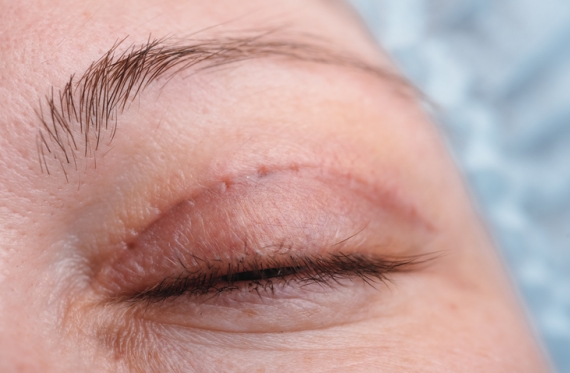Droopy Eyelid Causes
Do your eyelids look hooded or droopy? Are your upper eyelids so heavy that they are interfering with your vision? If so, you may have a condition called droopy eyelid. This can be due to dermatochalasis, ptosis or a combination of both. Dermatochalasis is when extra skin becomes prominent enough to touch the lashes and may block part of your view. Ptosis is when the height of the eyelid sits low enough to block light from entering the eye. A unilateral droopy lid just affects one eye while bilateral affects both eyes. Rest assured you can trust Elmquist Eye Group to get to the bottom of your droopy eyelid causes.
Who develops ptosis?
 People who develop ptosis may do so through the normal aging process or may experience trauma or have a medical disorder that leads to it. Ptosis can be permanent but can also come and go. Actually, some people are born with congenital ptosis, but most develop it later in life (acquired ptosis.)
People who develop ptosis may do so through the normal aging process or may experience trauma or have a medical disorder that leads to it. Ptosis can be permanent but can also come and go. Actually, some people are born with congenital ptosis, but most develop it later in life (acquired ptosis.)
What are the risk factors for droopy eyelids?
Anyone can develop droopy eyelids. The condition affects men and women equally, and it also affects all ethnicities. While droopy eyelids do occur with aging, people of all ages can develop ptosis.
Are droopy eyelids a serious condition?
It can be serious enough that it blocks your vision. Sometimes the ptosis resolves naturally on its own, but other times surgical intervention is needed.
Sometimes, the levator muscles in the eyelid do not function properly, due to trauma or perhaps a neurological condition. Certain medical conditions increase your risk of developing droopy eyelid.
Here’s one way to tell the possible origin. If just one of your eyes is affected, the droop is usually the result of a nerve injury or it may be caused by a stye.
If both eyelids droop, another medical condition is likely the underlying cause. Additionally, more serious conditions like stroke, cancer, brain tumor or a muscle disease called myasthenia gravis can lead to ptosis.
What symptoms should I look for?
Sagging in one or both of the upper eyelids is always the main sign. Sometimes, the lids sag enough to interfere with vision. If you find that you are tilting your head back to read, your sag is becoming fairly significant. Some patients have intermittent sagging, or droop that is not really noticeable because vision is not obscured.
Many patients with droopy eyelids also have either extremely dry or extremely watery eyes. Family and friends also tell them their faces look tired or weary because of the droop. Although the area affected is around your eyes, the sag can change your overall facial appearance. Some patients say that their eyes ache; this is due to the strain in the levator muscle.
How do doctors diagnose the condition?
Our doctors will do a thorough examination to investigate your condition of droopy eyelid. We will particularly look for signs and symptoms of any underlying conditions that may be causing the eyelid droop.
We will talk to you about your medical history and your history of drooping lids. We will also conduct a physical exam of your eyes. Our doctors will closely examine your dilated eyes with a slit lamp under high intensity light and may run some tests like a visual field to determine how much the upper lid skin is affecting the top part of your visual field. They may also perform a Tensilon test to determine your overall muscle strength to help diagnose underlying muscle disorders that may be causing the eyelid issue.
Trust in Elmquist
If you are having eyelid issues, you can trust the professionals at Elmquist Eye Group to do a thorough exam to understand your droopy eyelid causes. If you think you have dermatochalasis or ptosis, don’t suffer any longer. Call us today to make an appointment at Elmquist Eye Group.
